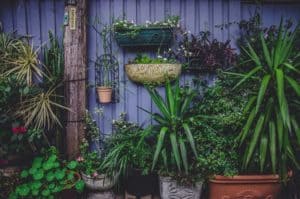Plantings are an essential part of the ecosystem that’s beneficial to both animals and humans. Plants provide food, clean the air, and help maintain humidity levels in an area. Whether people know it or not, the growth of a plant is essential to our well-being and sustenance because of what they provide for us.
If you know anything about farming, you’d know that watering the plants helps them to grow. But, is that all there is to it? It is important to note that the growth of plants is dependent upon certain environmental factors such as light, temperature, the pH level of soil/water, and the availability of essential elements needed for healthy plant growth. It is those essential elements that aid its growth we would be covering in this article.
Carbon Dioxide
Plants need carbon dioxide for photosynthesis. Organisms respire CO2, which is why concentrations of this element decrease over time, but it can be replenished by decaying organic matter. To increase the concentration of CO2 available to plants, people set up greenhouses with controlled amounts of CO2 and monitor its levels hourly to make sure it’s at a safe level for plant survival.
The light would also affect how much carbon dioxide gets released from the decaying matter. The more intense the lighting system or amount of artificial light is used in a greenhouse, the faster the process will happen resulting in more carbon dioxide production.

Light
Photosynthesis cannot take place without light since that’s what drives the. It also affects plant growth indirectly because the amount of energy a plant absorbs to begin its photosynthesis process influences how fast it grows.
There are three main types of light that affect plant growth, and the first one is Ultraviolet Light (UV). In natural lighting, this is the light coming from the sun. UV light is highly recommended for frugal gardening – the stronger the intensity, the better… but too much can be harmful. Visible Light is next as it affects plant growth in an indirect way because it’s used in respiration and photosynthesis. Plants need a consistent supply of visible light to produce enough energy for their own growth and survival. Last but not least, Infrared light is commonly used as greenhouse lighting because plants absorb this type of light readily to produce more carbohydrates needed for their growth. They also create a “heat sink” that absorbs heat from the plants to help regulate their internal temperature making it more comfortable for them.
Temperature
Plants cannot survive in extreme temperatures. Aside from the natural elements, people also have a huge role in setting up plant growth environments so they can be nurtured from start to finish. People ensure that these plants are not exposed to high or low temperatures by regulating the greenhouse’s temperature through air conditioning and heating systems.
pH Level of Soil/Water
Plants need a well-balanced pH level in order to absorb all the nutrients it needs for healthy growth. If there is too much or too little acidity level in soil or water, then the nutrient absorption process will suffer affecting how fast it grows. This is why it is essential for people to test soil and water regularly to ensure that they are not too acidic or alkaline.
Essential elements are needed by plants in order for them to grow healthy and fast. Although there are many factors affecting its growth, these above-mentioned elements make the plant’s environment right for healthy growth.

Recent Comments